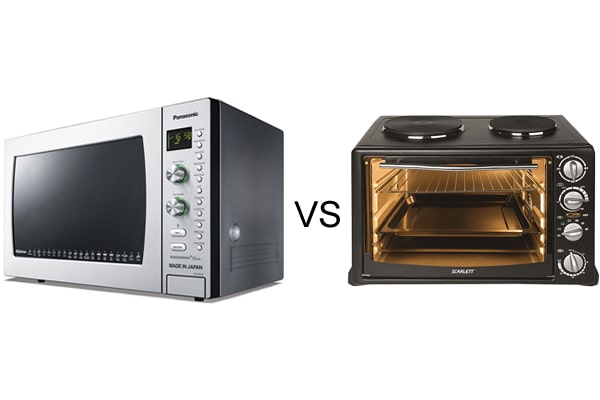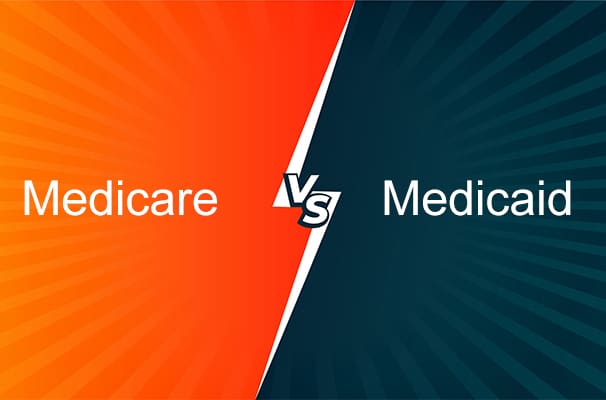Navigating the world of government assistance programs can be confusing, especially with terms like SNAP and EBT often used interchangeably. Understanding these programs and their differences is crucial for those relying on them and for businesses that accept these benefits. This guide will clarify what SNAP and EBT are, their differences, how they function, and their impact on society.
Understanding SNAP and EBT
Supplemental Nutrition Assistance Program (SNAP) and Electronic Benefits Transfer (EBT) are two key components of the U.S. food assistance system. While they work closely together, they serve different functions:
- SNAP: The program that provides financial assistance for purchasing food.
- EBT: The electronic system used to deliver SNAP benefits.
What is SNAP?
SNAP is the largest federal nutrition assistance program, providing low-income households with funds to purchase food. The program was formerly known as the Food Stamp Program and aims to improve nutrition among low-income individuals and families.
- Full-Form: Supplemental Nutrition Assistance Program
- Introduction: 1939
- Primary Function: Provides funds to purchase food
- Eligibility: Based on income, household size, and expenses
Benefits of SNAP:
- Food Security: SNAP helps alleviate hunger by providing essential funds for food purchases.
- Healthier Diets: Enables recipients to buy nutritious foods like fruits, vegetables, and whole grains, which might otherwise be unaffordable.
- Economic Stability: Helps low-income families stretch their food budgets, allowing them to allocate limited resources to other critical needs like housing and healthcare.
Eligibility Criteria:
- Income: Must meet federal poverty guidelines. Generally, gross monthly income should be at or below 130% of the poverty line, and net income after deductions should be at or below 100% of the poverty line.
- Resources: Countable resources must total $2,250 or less ($3,500 for households with a disabled person or someone 60+).
- Work Requirements: Able-bodied adults between 16 and 59 years must meet work requirements, including registering for work, not quitting a job voluntarily, and participating in employment and training programs.
- Citizenship: Available to U.S. citizens and certain non-citizens, including lawful permanent residents and those admitted for humanitarian reasons.
- Social Security Numbers: Required for all household members.
- Re-certification: Recipients must periodically reapply and be reevaluated for eligibility.
Impact of SNAP:
- Reduction in Food Insecurity: SNAP plays a crucial role in reducing food insecurity by ensuring that low-income families have access to adequate nutrition.
- Economic Multiplier Effect: Every dollar spent on SNAP benefits generates more economic activity by increasing spending in local communities.
What is EBT?
EBT is the system through which SNAP benefits are delivered. It functions like a debit card and can be used at authorized retailers to purchase eligible food items.
- Full-Form: Electronic Benefits Transfer
- Introduction: Late 1990s
- Primary Function: Provides an electronic method for using SNAP benefits
- Usage: Used to purchase eligible food items and access other welfare benefits
Advantages of EBT:
- Convenience: Recipients use a card similar to a debit card, making transactions seamless and discreet.
- Privacy: Eliminates the visible stigma associated with traditional paper food stamps.
- Security: Reduces the risk of fraud and theft as the card requires a PIN for transactions.
How EBT Works:
- Issuance: Approved applicants receive an EBT card from their state’s EBT contractor.
- Monthly Deposits: SNAP benefits are electronically loaded onto the EBT card each month.
- Usage: The card is used at participating retailers to purchase eligible food items. When a purchase is made, the EBT system verifies the PIN and deducts the purchase amount from the recipient’s account.
Authorized Purchases:
- Eligible Foods: Items such as fruits, vegetables, meat, dairy, bread, cereals, and seeds and plants that produce food.
- Non-Eligible Items: Alcohol, tobacco, pet food, household supplies, and vitamins.
Additional Uses:
- Cash Benefits: Some EBT cards also provide access to cash benefits from other assistance programs like Temporary Assistance for Needy Families.
Key Differences Between SNAP and EBT
| Feature | SNAP | EBT |
| Full Form | Supplemental Nutrition Assistance Program | Electronic Benefits Transfer |
| Type | Program | Electronic Method |
| Year of Introduction | 1939 | Late 1990s |
| Primary Function | To improve the nutrition of low-income households | To provide an electronic method for using welfare benefits |
| Delivery System | Delivers benefits via EBT | Is the card system used to deliver SNAP benefits |
| Usage Restrictions | Only for food purchases | Used for food purchases and other welfare benefits |
| Application | Applied by individuals/households in need | Issued to approved individuals/households |
| Recipients | Low-income individuals and families | Recipients of SNAP and other approved state welfare programs |
Example: A recipient approved for SNAP will receive an EBT card. SNAP benefits are then loaded onto this card each month, allowing the recipient to use the EBT card to purchase food at authorized retailers.
SNAP Benefits and Eligibility
Detailed Benefits:
- Food Security: SNAP is designed to ensure that low-income families have consistent access to nutritious food, addressing both immediate hunger and long-term health outcomes.
- Nutritional Support: By providing funds specifically for food, SNAP helps improve dietary choices among recipients, promoting overall health and wellness.
Eligibility Process:
- Income Verification: Applicants must provide proof of income, such as pay stubs or tax returns.
- Resource Assessment: Includes checking savings, investments, and other assets.
- Work Requirement Documentation: For able-bodied adults, proof of employment or participation in a job training program is required.
- Application Submission: Applications can usually be submitted online or at local SNAP offices.
Impact on Communities:
- Economic Stimulus: Increased spending at local grocery stores boosts local economies and supports jobs in the food retail sector.
- Health Benefits: Access to better nutrition can lead to lower healthcare costs and improved public health.
How EBT Works
Functionality:
- Card Distribution: States issue EBT cards to eligible SNAP recipients.
- Monthly Funding: SNAP benefits are electronically deposited onto EBT cards each month.
- Transaction Process: Recipients use the card at authorized retailers. At checkout, the EBT system verifies the purchase and deducts the amount from the available SNAP balance.
Security Measures:
- PIN Requirement: Each transaction requires the entry of a Personal Identification Number (PIN), ensuring that only the cardholder can use the benefits.
- Tracking: Transactions are tracked electronically, making it easier to monitor and manage the use of benefits.
Usage and Restrictions:
- Eligible Purchases: Can be used for food items like fruits, vegetables, meats, dairy products, and seeds.
- Non-Eligible Purchases: Cannot be used for items like alcohol, tobacco, non-food items, or hot prepared foods.
Accessing Cash Benefits:
- TANF and Other Programs: Some states allow EBT cards to access cash benefits from other programs. This cash can be withdrawn from ATMs or used to purchase non-food items where allowed.
Practical Example: A family in need applies for SNAP and is approved. They receive an EBT card loaded with their monthly benefit amount. They use this card to buy groceries at their local store, ensuring they have enough food for the month without using cash.
How to Accept EBT at Your Business
Becoming an EBT Retailer:
- Application Process: Businesses must apply through the USDA Food and Nutrition Service (FNS) to become authorized to accept EBT.
- Equipment Requirements: Businesses need a point-of-sale (POS) system capable of processing EBT transactions. This might involve updating existing systems or acquiring new ones.
- Training Staff: Employees must be trained to handle EBT transactions correctly, including understanding eligible items and transaction procedures.
Advantages for Businesses:
- Expanded Customer Base: Accepting EBT allows businesses to serve low-income customers who rely on SNAP benefits.
- Increased Sales: Businesses often see an increase in sales as SNAP recipients spend their benefits.
- Enhanced Community Reputation: Accepting EBT can improve a business’s standing in the community as a supporter of low-income households.
Steps to Implementation:
- Apply for Authorization: Apply the FNS.
- Acquire or Update Equipment: Ensure POS systems are equipped to handle EBT transactions.
- Train Staff: Educate employees on processing EBT transactions and understanding eligible purchases.
Case Example: A local grocery store decides to accept EBT to serve a broader community segment. They apply for authorization, update their POS systems, and train their staff. As a result, they attract more customers, boost sales, and contribute to local food security.
Advantages of EBT Over Traditional Methods
Convenience:
- Ease of Use: Functions like a debit card, making it simple for recipients to use their benefits at checkout.
- Faster Transactions: EBT transactions are quicker than processing paper food stamps, reducing wait times at registers.
Discreetness:
- Modern Appearance: EBT cards resemble standard debit cards, reducing the stigma associated with using food assistance benefits.
Security:
- Fraud Reduction: EBT cards require a PIN and are electronically tracked, minimizing the risk of fraud and misuse.
- Traceability: Each transaction is logged, allowing for better monitoring and management of benefits.
Real-World Scenario: Before EBT, recipients used paper food stamps, which could be lost, stolen, or used fraudulently. The transition to EBT cards has significantly improved security and convenience, providing recipients with a modern, dignified way to use their benefits.
The Impact of SNAP and EBT on Society
Alleviating Hunger:
- Food Security: SNAP and EBT ensure that millions of low-income families can access nutritious food, helping to reduce hunger and food insecurity.
Economic Benefits:
- Local Economies: SNAP benefits spent at grocery stores support local economies by increasing sales and supporting jobs in the food retail sector.
- Job Creation: SNAP spending stimulates economic activity, supporting jobs in the food supply chain from production to retail.
Public Health:
- Improved Nutrition: SNAP recipients can afford healthier foods, leading to better overall health and reduced healthcare costs.
- Healthcare Cost Reduction: Access to nutritious food helps prevent diet-related diseases, lowering healthcare expenses for individuals and the community.
Community Case Study: In a community with high unemployment, the implementation of SNAP and EBT has led to increased food security. Local grocery stores report higher sales, and there is a noticeable improvement in the health of residents due to better nutrition.
Challenges and Future Directions
Challenges:
- Awareness: Many eligible individuals are not fully aware of the benefits available to them or how to access them.
- Stigma: Despite the improvements, there remains some stigma associated with using EBT cards, which can deter people from applying for benefits.
Future Directions:
- Expansion of Acceptance: Increasing the number of retailers, including online platforms, that accept EBT.
- Public Education: Enhancing awareness campaigns to ensure that eligible individuals understand how to apply for and use SNAP and EBT benefits.
- Technological Integration: Improving technology to make EBT transactions even more seamless, such as integrating with more online shopping platforms.
Innovative Example: A pilot program integrates EBT with online grocery delivery services, allowing SNAP recipients to order groceries online and have them delivered. This program helps those with limited transportation options and ensures better access to food.
FAQs on SNAP and EBT
What types of food can I purchase with my SNAP benefits?
You can use your SNAP benefits to purchase any food for the household, such as fruits, vegetables, meats, dairy products, and bread and cereals. You can also use SNAP benefits to buy seeds and plants that produce food.
Can EBT benefits be used to withdraw cash?
While SNAP benefits on an EBT card cannot be withdrawn as cash, certain types of state assistance benefits loaded onto EBT cards can be. This varies depending on the specific benefits and the state’s policies.
Are there specific stores where I can use my EBT card?
Yes, you can use your EBT card to buy foods from authorized retailers, which typically include most grocery stores, some farmer’s markets, and certain online vendors.
What is the process to apply for SNAP benefits?
To apply for SNAP benefits, you’ll need to fill out a state-specific application and submit it to your local SNAP office. Each state has a different application, which can usually be found online.
How often are SNAP benefits loaded onto the EBT card?
Benefits are loaded onto the EBT card once a month, on a date determined by the recipient’s case number or date of birth.
Can anyone in my household use our EBT card?
Yes, anyone in your SNAP household can use your EBT card, but they’ll need to know the Personal Identification Number (PIN) you set for the card.
Wrapping Up: SNAP and EBT
Understanding the differences between SNAP and EBT is essential for both recipients and businesses. SNAP provides crucial nutrition assistance to low-income individuals and families, while EBT offers a modern, efficient way to distribute these benefits. Together, they form a vital safety net, ensuring that millions of Americans have access to the food they need to lead healthy, productive lives.





